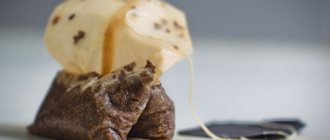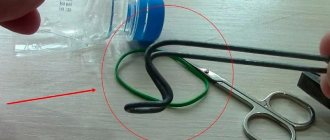The reusable plastic bottle is very practical to use. People who use it not only save money, but also take care of the environment.
However, if used incorrectly, bacteria begin to rapidly multiply in it, which leads to the appearance of an unpleasant odor.
Read the article on how to remove odor from a plastic water bottle.
Cold water rinsing
The simplest solution is to thoroughly rinse the bottle under the tap. The liquid washes away traces of odorous substances and reduces the perceptibility of odors.
Fill the bottle with cold running water and rinse 3-5 times. If plaque is visible, use a brush to better clean the internal surfaces. You cannot pour boiling water into a plastic bottle, as the material will release harmful chemicals.
Best Alternatives to Plastic Water Bottles
If you don’t want to buy a plastic water bottle and waste your free time trying to get rid of unpleasant odors, you should pay attention to alternative options. In the IpopoKIDS catalog, study the popular types of eco-bottles made from harmless materials presented by manufacturers.
Glass drinking containers made of borosilicate glass have proven themselves to be excellent in use. Drinking bottles made of Tritan are absolutely harmless and practical, easy and simple to clean. The website presents the following models of Tritan water containers:
As one option, you can consider purchasing a thermos flask made of stainless steel or aluminum. They are inexpensive and easy to use, but are more suitable for teenagers. Pick up a water bottle at the IpopoKIDS marketplace so that your child doesn’t feel thirsty even when he’s training or on a hike.
Ventilation in a cold place
Pre-wash the dishes with soapy water and leave to dry. Fill with water and place in the refrigerator for 24 hours. The lid must be open. The method will get rid of the chemical smell of plastic and mustiness.
Keep container in a cool, dry place when not in use. This will prevent the appearance of intrusive aromas in the future.
How to remove the smell of garlic
The aroma of garlic is pleasant at first, but in its residual form it is repulsive. And traditional methods of combating odors do not work on garlic. Other “tactics” are needed here.
| Way | Description |
| Boiling | Add 9% vinegar to the water (1 tbsp per 1 liter). Immerse containers in this solution and boil for 10-15 minutes. The method is excellent, but the cheapest plastic may not withstand high temperatures and melt. |
| Mustard powder | PVC dishes are rubbed with dry mustard and left for 15 minutes. Then they wash it under the tap. |
| Potato | Cut fresh potatoes in half. Rub the plastic thoroughly with the cut side to form a starch foam. You can also grate the potatoes on a coarse grater. |
| Soda and soap | Add soda and soap to water heated to approximately 60 °C (1 tablespoon of each per 1 liter). Stir. Dip a sponge into the solution and wipe the bottom and walls of the container. |
Rinse the bottle with baking soda
Baking soda is a universal cleaner. A natural antiseptic will destroy bacteria, clean dirt and plaque on the bottom and walls of dishes. The method works against musty odors caused by long-term storage of liquids in a closed bottle.
Rinse dishes with cold water. Add 2 tbsp. l. powder, pour warm water. Shake until completely dissolved and leave for an hour. Rinse and dry the container. If the smell remains, repeat cleaning again. To remove strong aroma, leave the solution overnight.
Prevention of unpleasant odors
The appearance of an unpleasant odor can be prevented by following these recommendations:
- You cannot leave unfinished water or other drinks inside; they must be drained;
- after each use of the container, it must be thoroughly rinsed with clean water;
- You should not tighten the cap if the bottle is empty but wet - such an environment is optimal for the growth of microbes;
- Once a week, the container should be washed with a soda solution - pour it overnight, rinse it in the sink in the morning, wash with clean water and dry thoroughly.
These simple steps will help prevent the appearance of unpleasant odors from plastic containers.
Put paper in the bottle
Printing inks can eliminate the unpleasant odor from plastic. Take a sheet of newspaper, crumple it, push it inside and close the lid tightly. The material will absorb excess after 2-3 hours.
Method for removing persistent old odors:
- Mix baking soda with water to form a thick paste.
- Take a newspaper, tear it into small pieces, and place it in a container.
- Add the soda solution and shake the container.
- Leave the bottle for 2-3 hours.
- Shake, remove newspaper and solution, rinse with running water.
LiveInternetLiveInternet
10 Ways to Remove Bad Odors from Plastic Food Containers.
Unfortunately, no matter how hard you clean plastic food containers, over time there comes a point when they begin to emit an extremely unpleasant odor. Before trying the methods below, rinse the container thoroughly with hot water and detergent (except for the cold water method). Newspaper Regular newspaper will help get rid of the smell of food in the container. Take a sheet of newspaper, crumple it well and place it in a plastic bowl. Don't forget to close the lid tightly. The newspaper will absorb the unpleasant odor, and within a few hours the container will be as good as new. For best results, it is recommended to leave it overnight. Coffee Coffee will help get rid of the unpleasant odor in a plastic container. After all, by its nature it is an excellent absorbent and effectively draws out bad amber. Coffee beans or ground coffee should be poured into a container and left closed for a day. You can also coat the bowl with coffee grounds and place it in the freezer overnight. The smell should go away. Lemon Rinse a plastic container with lemon juice or, more effectively, wipe it with lemon peel. Baking soda Mix baking soda with a small amount of water. Use the resulting paste to thoroughly rub the inside walls of the container. Leave it for a day. Then rinse the bowl and wipe dry. Repeat the procedure if necessary. Charcoal Place a piece of charcoal in a container. Cover tightly and leave until the smell is absorbed. Vinegar Fill a container with warm water, add a quarter cup of vinegar and a couple of drops of dish soap. Cover the bowl, shake, open and leave for several hours. Then rinse the container. Vanillin The technology is similar. Fill the container with hot water and add a pinch of vanilla. Shake and leave overnight. In the morning, all that remains is to rinse it and dry it. Sun rays The sun, air and water are our best friends. And indeed: the sun's rays can remove the unpleasant odor from the walls of a plastic container. On a sunny day, place your bowls in fresh air. The sun will do all the dirty work for you. “Night Baths” Fill a container with hot water and add a couple of spoons of any detergent. Shake the container well and leave overnight. In the morning, rinse the container with running water. If the smell still remains, pour warm water with baking soda and shake again. After this, the container should be as good as new. Cold Water Before you wash the container in warm water and detergent, rinse it in cold water. This will prevent unpleasant odors from sauce, eggs, and gravy from being absorbed into the walls of the plastic container.
Lemon juice
Lemon fights very persistent odors. The acid contained in the fruit reacts with the plastic and destroys foreign aromas after a closed bottle is stored for a long time.
Squeeze the juice of half a lemon and dissolve in 0.5 liters of water. Pour in the liquid and rinse the dishes after an hour. You can use freshly squeezed juice of other citrus fruits - grapefruit, orange - or concentrated citric acid.
Another way:
- Fill the container with water with the dissolved juice of one citrus.
- Place in the refrigerator. When everything is frozen, empty the bottle.
- Wash with warm water and soap, rinse well under the tap.
Cleaners use lemon peel. Cut the zest into small pieces, fill the bottle halfway, and add water. Rinse after 24 hours.
Removing plastic smell from an electric kettle
A new kettle is a reason for joy in every family, but what to do if the device smells like plastic? Simple, proven methods will help you remove this unpleasant aroma.
Before you begin work on removing the unpleasant smell of plastic from the kettle, you need to wash it with cold water. Then use one of the following methods:
- Take a few lemons and squeeze the juice into a teapot. Fill the kettle with water to the maximum limit. Turn on the kettle and let the water boil. Leave the water in the kettle for 10-12 hours, then boil again. Repeat the procedure several times.
- Some professionals recommend using lemon peel rather than juice. To remove the smell of plastic from a kettle, you will need a lot of peel; you need to fill the kettle with it to the middle. Then pour water into the kettle to the full mark, turn it on, and boil. If the smell of plastic remains, repeat the procedure several times.
- You can use improvised means. For example, acetic acid. It is necessary to fill the electric kettle with water, add 2-3 tablespoons of table vinegar (9%) to it. Boil the kettle. Repeat the procedure several times, then rinse the device several times.
- Baking soda will help remove the unpleasant smell of plastic from an electric kettle. Fill the device with water, add a few tablespoons of soda to it, and boil several times. Then rinse several times - only then can you use the device for its intended purpose.
Features of cleaning a cooler bottle
It is important to understand that you need to clean not only the bottle, but also all parts of the cooler that come into contact with water. Read this entire article on how to clean a water cooler.
If only the water container needs washing, you can clean it using:
- citric acid;
- soda;
- vinegar;
- salt with dish gel.
The cleaning process is no different from the procedure for washing glass and other containers. The main thing is to rinse the container thoroughly and be sure to dry it completely. If there is heavy contamination, first fill the bottle with warm water.
How to disinfect a large bottle
For long-term storage of wine or beer, the bottles must be sterilized before capping. If the containers are small, just hold them over steam or bake them in the oven. If the bottle is large, try one of the following:
- pour boiling water over the inner walls;
- order specialized steam cleaning;
- buy a disinfectant (pyrosulfite or metabiflite), dilute the drug in water according to the instructions and rinse the containers.
Please note that cork and other utensils that will come into contact with the future wine also need to be sterilized.
You can clean the surface of the bottle from plaque and dirt in several ways using household chemicals or improvised substances. When choosing the appropriate method, consider what material the container is made of. In addition, choose those ingredients that will definitely not spoil the inner surface of the container.
Did you like the article? Was she helpful?
General recommendations for using plastic utensils
- Any plastic utensils, even the highest quality, are intended for short-term contact with food.
- It is not recommended to use plastic containers for storing fat-containing products such as butter, margarine, animal fats, and mayonnaise.
- It is prohibited to use various plastic containers for pickling and fermenting vegetables, fruits and mushrooms.
- Damaged containers should not be used for eating or storing food.
- Do not use plastic that is not intended for this purpose for hot food or for freezing.
- Do not store alcohol-containing liquids in plastic containers. Alcohol is a strong solvent and can release harmful substances from plastic.
- Do not reuse disposable tableware. This advice also applies to plastic bottles.
What if there are no newspapers?
Understanding that not everyone buys newspapers home, I want to share what can be used to replace them. One day my supplies of newspapers ran out and I couldn’t find anything better than to fill the food tray with... toilet paper. I had a gray one on hand, an economy version of the old style. What can I say, she managed to eliminate the smell with a 5+!
Why plastic turns yellow over time and how to bleach it
There are many reasons why plastic turns yellowish. Let's talk about the most common ones.
- If this material does not contain special substances that prevent exposure to the sun, then ultraviolet radiation partially destroys it. To avoid this process, benzophenone and benzotriazole are added to the material during production.
- Plastic also turns yellow when exposed to oxygen. But this takes a lot of time.
- Sudden changes in temperature. For example, if the item is in the kitchen.
- Yellowing due to washing with strong chemical solutions that corrode the surface.
- Recycling of material. Plastic made from industrial waste may be of poor quality. For long service life, when melting them, you need to add special products.
- Fatty plaque.
- Violations of the rules for care and use of the product. For example, frequent smoking in the room where the item is placed, or an open fire nearby. Even with ventilation and exhaust, the plastic will still turn yellow.
Preparation of the solution
Fill the bottle 4/5 full with water and 1/5 full with regular white vinegar. Add some baking soda to remove odors. Do not add excessive amounts of baking soda powder, otherwise the solution will foam too much.
In this solution, you cannot replace regular white vinegar with apple cider vinegar. Otherwise, the bottle will acquire a characteristic odor that will be difficult to get rid of.
Some housewives replace the vinegar in the solution with bleach. This helps fight bacteria more effectively. But it is still better not to use bleaching agents, as they have a strong odor.










